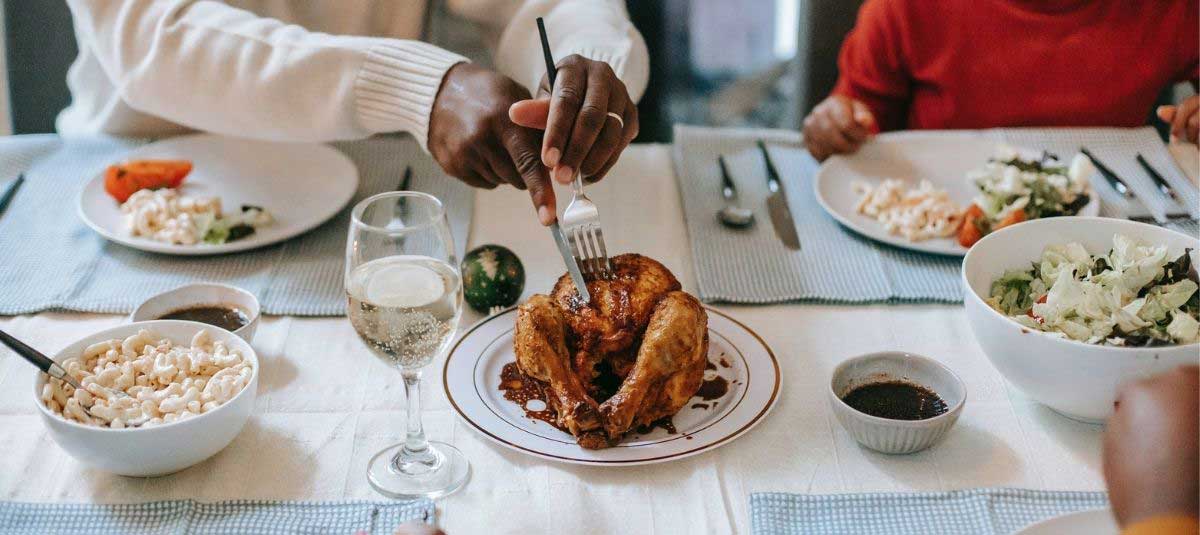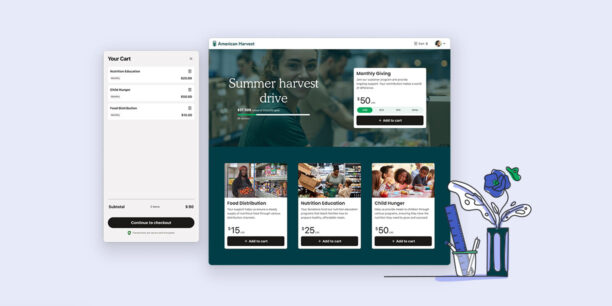How to Encourage Donors to Give Back on Thanksgiving

Request a Demo
Learn how top nonprofits use Classy to power their fundraising.
The holiday season is fast approaching, which means nonprofit development teams are kicking into high gear. Although 31 percent of charitable donations happen in the final month of the year, giving really starts to ramp up in November, when Thanksgiving reminds people of all they have to be thankful for. The emotions triggered by the holiday season may actually be one reason that charitable donations increase.
Researchers have found that emotion is an important part of the decision to donate, showing that appeals that make a great emotional impact on an audience are more effective. But Thanksgiving focuses on one feeling in particular: gratitude.
Learn how the season’s emphasis on gratitude can help mobilize your community for the year-end fundraising push. By reminding donors how much they have received, you can inspire them to give back.
Giving Is an Emotional Decision
We all know intuitively that our emotional state affects our behavior. For example, most of us have snapped at someone because we’re angry about something else. With this in mind, psychologists have studied how certain emotions affect whether people give to charity and how much.
Researchers theorize that someone is more likely to give to a cause when they feel sympathy for those affected. This is one key reason that it’s so important to present a single identified victim, because audiences are more likely to connect emotionally with an individual than with a group of people. Conversely, appealing to donors with statistics can put them in a more analytical mindset, making them less likely to give.
Beyond charitable giving, researchers have found that people in a positive emotional state are more likely to help someone, as long as the action isn’t costly to them. In other words, a good mood makes you more likely to lend a hand to someone else as long as helping won’t significantly inconvenience or cost you.
How Gratitude Makes Us More Generous
Gratitude is a specific type of positive emotion. That’s why scientists developed some detailed experiments to see how it affects generosity and willingness to help. Noting past researchers’ conclusions that “individuals who report habitually experiencing gratitude engage more frequently in prosocial behaviors than do individuals who experience gratitude less often,” Monica Y. Bartlett and David DeSteno of Northeastern University tested whether the experience of gratitude could immediately make someone more giving.
First, they put one group of participants in a situation where a stranger helped them solve a simple technical issue, and another group in a a neutral exchange with a stranger. The stranger in each situation then asked the participants if they would help them in a work-study assignment by participating in a long, tedious survey. Participants made to feel grateful spent significantly more time working to help the person who helped them.
While this first study does show how a person’s level of generosity can be changed, it could be argued that the more generous participants were driven by reciprocity, or the desire to return a favor to an individual. If gratitude only increases someone’s generosity toward those who help them, it isn’t much help for most development professionals. But Bartlett and DeSteno dug deeper in the next experiment. In this new scenario, one group of participants was made to feel gratitude and one was not, just like before. The difference was that portions of each group were asked for help (in the same task) by either the person who had helped them, or by a completely different person.
In both cases, people experiencing gratitude spent more time helping someone. While more time was given overall to the familiar person, the effect of gratitude remained similar. Simply put, people feeling gratitude spent more time helping another person, even if that wasn’t the person who helped them. This generalized generosity can be a valuable insight for nonprofit fundraisers.
Tips for Holiday Fundraising
With Thanksgiving and end-of-year holidays coming up, your nonprofit can tap into people’s feelings of gratitude to promote giving. The challenge, however, is to promote gratitude without being manipulative or inducing guilt.
A good way to start is by showing your gratitude for them. Begin your message by stating how grateful your team is for their support. You can even remind them of some of the programs and projects they helped you accomplish over the past year. This is also a subtle message of empowerment. It tells your audience that they have made a difference (and can do so again).
Next, ask your audience to reflect on what they are thankful for, whether it’s the inspiring impact stories you send them, their health and happiness, or even seasonal treats like pumpkin pie and stuffing. You can even use social media to invite your community to say what they are grateful for.
Finally, make a tasteful ask of your audience. The focus should be on spreading happiness and warmth, not guilting people into giving back.
“We’re thankful for every gift we receive. If you’re feeling the holiday spirit, will you help us share this cheer with others in need?”
With #GivingTuesday and year-end campaigns approaching soon, a soft ask like this can help your organization gain some momentum. And it reminds donors how they can pass on the warm feeling of gratitude to others. This Thanksgiving, use your communications to tell people that you are thankful for them and remind them of all they can be grateful for

The Guide to Holiday Fundraising
Subscribe to the Classy Blog
Get the latest fundraising tips, trends, and ideas in your inbox.
Thank you for subscribing
You signed up for emails from Classy
Request a Demo
Learn how top nonprofits use Classy to power their fundraising.
 Explore Classy.org
Explore Classy.org 

